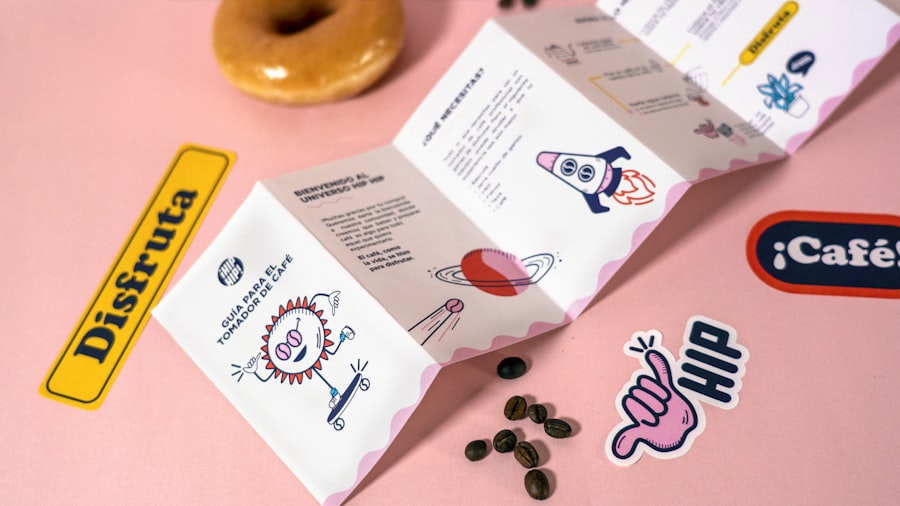In an era where environmental concerns are at the forefront of global discourse, the significance of green packaging cannot be overstated. Green packaging refers to the use of materials and processes that are environmentally friendly, aiming to reduce waste and minimize the carbon footprint associated with traditional packaging methods. As industries continue to expand, the demand for packaging solutions that align with sustainable practices has surged.
This shift is not merely a trend; it reflects a growing recognition of the need to protect our planet for future generations. Companies are increasingly held accountable for their environmental impact, and green packaging serves as a critical component in their sustainability strategies. The importance of green packaging extends beyond mere compliance with regulations or consumer preferences; it also plays a vital role in brand reputation and market differentiation.
Businesses that adopt eco-friendly packaging solutions often find themselves at a competitive advantage, as consumers are more inclined to support brands that demonstrate a commitment to sustainability. For instance, companies like Unilever and Coca-Cola have made significant strides in reducing their packaging waste and utilizing recycled materials, which has not only enhanced their public image but also fostered customer loyalty. As awareness of environmental issues grows, the expectation for brands to adopt green practices becomes increasingly pronounced, making green packaging an essential aspect of modern business strategy.
Key Takeaways
- Green packaging is important for reducing environmental impact and promoting sustainability.
- Sustainable materials like bioplastics, recycled paper, and bamboo are great options for green packaging.
- Biodegradable and compostable packaging options are eco-friendly and help reduce waste.
- Recycling plays a crucial role in green packaging by reducing the need for new materials and minimizing waste.
- Innovations in eco-friendly packaging solutions, such as edible packaging and mushroom-based packaging, are shaping the future of green packaging.
Sustainable Materials for Green Packaging
Key Components of Sustainable Materials
The foundation of effective green packaging lies in the materials used. Sustainable materials are those that can be sourced responsibly, have a minimal environmental impact during production, and can be recycled or composted at the end of their life cycle. Common sustainable materials include recycled paper, cardboard, bioplastics, and plant-based materials such as bamboo and hemp.
Environmental Benefits and Circular Economy
These materials not only reduce reliance on fossil fuels but also contribute to a circular economy where resources are reused rather than discarded. Recycled paper and cardboard are among the most widely used sustainable materials in packaging. They offer a significant reduction in energy consumption and greenhouse gas emissions compared to virgin materials. For example, producing recycled paper uses about 60% less energy than producing new paper from trees.
Alternatives to Conventional Plastics
Additionally, bioplastics derived from renewable resources like corn starch or sugarcane are gaining traction as alternatives to conventional plastics. These materials can be designed to break down more easily in the environment, thus mitigating the long-lasting impact of plastic pollution.
Innovation in Packaging Design and Functionality
The choice of sustainable materials is crucial not only for reducing environmental harm but also for fostering innovation in packaging design and functionality.
Biodegradable and Compostable Packaging Options

Biodegradable and compostable packaging options represent a significant advancement in the quest for sustainable packaging solutions. Biodegradable materials are designed to break down naturally through the action of microorganisms, while compostable materials can decompose into nutrient-rich compost under specific conditions. Both options offer a promising alternative to traditional plastics, which can persist in the environment for hundreds of years.
One notable example of biodegradable packaging is polylactic acid (PLA), a bioplastic made from fermented plant starch. PLA is commonly used in food packaging, disposable cutlery, and even 3D printing applications. It decomposes under industrial composting conditions within 90 days, making it an attractive option for businesses looking to reduce their environmental footprint.
Similarly, companies like BioBag have developed compostable bags made from renewable resources that can break down in composting facilities, providing an eco-friendly alternative to conventional plastic bags. The adoption of biodegradable and compostable packaging not only addresses waste management issues but also encourages consumers to engage in responsible disposal practices.
The Role of Recycling in Green Packaging
| Metrics | Data |
|---|---|
| Amount of recycled packaging | 10 million tons |
| Reduction in greenhouse gas emissions | 30% |
| Energy saved from recycling | 75 million barrels of oil |
| Reduction in landfill waste | 50% |
Recycling plays a pivotal role in the ecosystem of green packaging by ensuring that materials are reused rather than discarded after a single use. The recycling process conserves natural resources, reduces energy consumption, and minimizes landfill waste. Effective recycling systems can significantly decrease the demand for new raw materials, thereby lowering the overall environmental impact associated with packaging production.
For instance, the recycling of aluminum cans is particularly noteworthy; it requires 95% less energy compared to producing new aluminum from bauxite ore. This energy savings translates into reduced greenhouse gas emissions and a smaller carbon footprint for products packaged in aluminum. Moreover, advancements in recycling technology have improved the efficiency and effectiveness of recycling processes, allowing for a broader range of materials to be recycled.
However, the success of recycling initiatives hinges on consumer participation and proper waste sorting practices. Educating consumers about the importance of recycling and providing accessible recycling options are essential steps toward enhancing the effectiveness of green packaging strategies.
Innovations in Eco-Friendly Packaging Solutions
The landscape of eco-friendly packaging is continually evolving, driven by innovation and technological advancements. Companies are exploring new materials and designs that not only meet sustainability goals but also enhance functionality and consumer appeal. One such innovation is the development of edible packaging made from natural ingredients like seaweed or rice paper.
This type of packaging eliminates waste entirely by allowing consumers to consume the packaging along with the product. Another exciting development is the use of smart packaging technologies that incorporate sensors or indicators to monitor product freshness or quality. These innovations can help reduce food waste by providing consumers with real-time information about the condition of perishable items.
Additionally, companies are experimenting with minimalist packaging designs that use less material while still providing adequate protection for products. For example, brands like Coca-Cola have introduced “PlantBottle” technology, which incorporates up to 30% plant-based materials into their plastic bottles, significantly reducing reliance on fossil fuels while maintaining product integrity.
The Impact of Green Packaging on the Environment

Reducing Plastic Pollution
Switching from traditional plastic packaging to biodegradable alternatives can lead to a substantial decrease in plastic pollution in oceans and landfills. According to a report by the Ellen MacArthur Foundation, if current trends continue, there could be more plastic than fish in the oceans by 2050; thus, adopting green packaging solutions is imperative for mitigating this alarming projection.
Lowering Carbon Emissions
Green packaging contributes to lower carbon emissions throughout its life cycle. The production processes for sustainable materials often require less energy and generate fewer greenhouse gases compared to conventional materials. For example, using recycled paper instead of virgin paper saves trees and reduces emissions associated with logging and processing.
Minimizing Environmental Footprint
When consumers engage in responsible disposal practices—such as recycling or composting—green packaging can further minimize its environmental footprint by returning valuable resources back into the production cycle.
Consumer Awareness and Demand for Green Packaging
Consumer awareness regarding environmental issues has surged in recent years, leading to an increased demand for green packaging solutions across various industries. Today’s consumers are more informed about the implications of their purchasing decisions and are actively seeking products that align with their values regarding sustainability. This shift in consumer behavior has prompted brands to reevaluate their packaging strategies and prioritize eco-friendly options.
Surveys indicate that a significant percentage of consumers are willing to pay more for products packaged sustainably. For instance, a study conducted by Nielsen found that 66% of global consumers are willing to pay extra for sustainable brands, with millennials showing even higher levels of commitment to eco-friendly practices. This growing demand has led many companies to invest in research and development aimed at creating innovative green packaging solutions that resonate with environmentally conscious consumers.
Brands that successfully communicate their sustainability efforts often enjoy enhanced customer loyalty and increased market share.
Challenges and Future Trends in Green Packaging
Despite the promising advancements in green packaging, several challenges remain that must be addressed to ensure its widespread adoption. One significant hurdle is the cost associated with sustainable materials and production processes. While prices have been decreasing as technology advances, many eco-friendly options still come at a premium compared to traditional materials.
This cost disparity can deter smaller businesses from making the switch to greener alternatives. Additionally, there is often confusion surrounding terms like “biodegradable” and “compostable,” leading to misconceptions among consumers about how these products should be disposed of properly. To combat this issue, clear labeling and education initiatives are essential for guiding consumers toward responsible disposal practices.
Looking ahead, future trends in green packaging will likely focus on increased collaboration between businesses, governments, and consumers to create comprehensive solutions that address environmental challenges holistically. Innovations such as plant-based inks, water-soluble films, and reusable packaging systems are expected to gain traction as companies strive to meet consumer demands while minimizing their ecological impact. As technology continues to evolve and consumer awareness grows, the potential for green packaging to transform industries remains vast and promising.
FAQs
What are eco-friendly packaging solutions?
Eco-friendly packaging solutions are packaging materials and designs that are environmentally sustainable and have a reduced impact on the environment compared to traditional packaging options.
What are the benefits of using eco-friendly packaging solutions?
Using eco-friendly packaging solutions can help reduce the amount of waste generated, minimize the use of non-renewable resources, lower carbon emissions, and contribute to a healthier planet.
What are some examples of eco-friendly packaging materials?
Examples of eco-friendly packaging materials include biodegradable plastics, compostable packaging, recycled paper and cardboard, mushroom packaging, and plant-based plastics.
How can businesses implement eco-friendly packaging solutions?
Businesses can implement eco-friendly packaging solutions by choosing sustainable materials, reducing packaging waste, optimizing packaging designs for efficiency, and educating consumers about the importance of eco-friendly packaging.
Are eco-friendly packaging solutions cost-effective for businesses?
While there may be initial costs associated with transitioning to eco-friendly packaging solutions, in the long run, they can lead to cost savings through reduced material usage, waste management, and potential marketing advantages.
